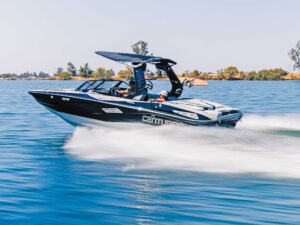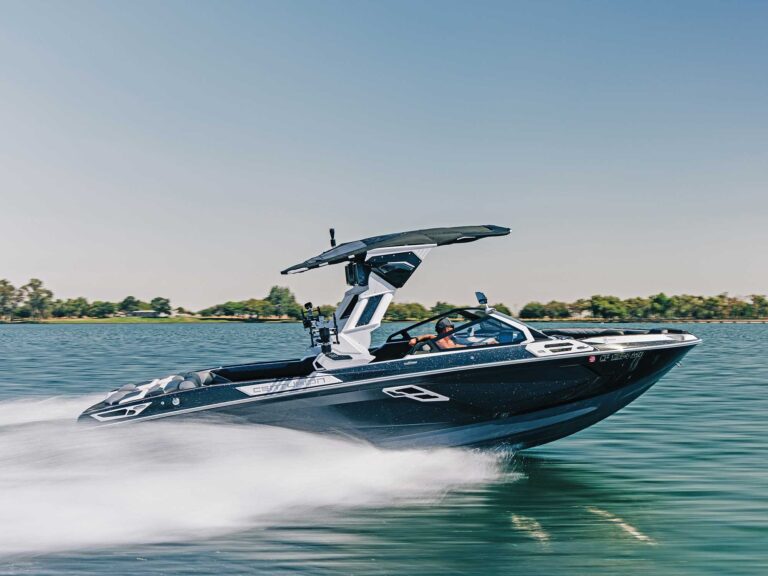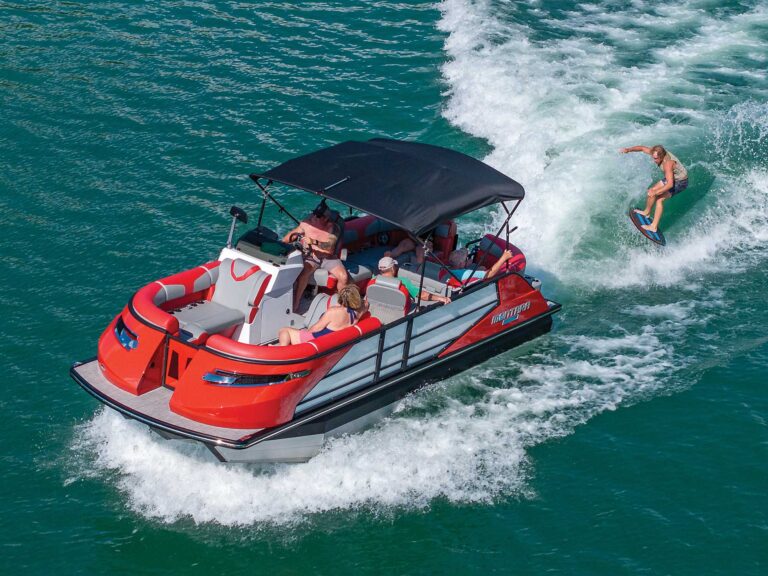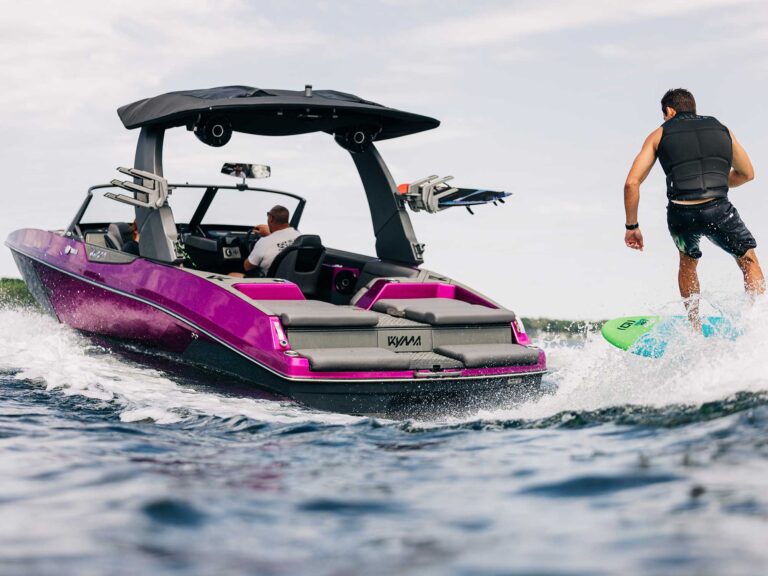As recently as two years ago we might have scoffed at the idea that a jet-drive boat could be considered as a viable water-sports model next to the inboards that dominate serious sessions and sets. The thought was that they were too light to displace a decent wake, too unsteady at slow speeds to track a straight path with a skier or rider in tow. So when the 212X arrived at our central Florida proving grounds looking very much at home next to two MasterCrafts (with a large “X” graphic wrapped across the “Eclipse Black” hull stripe and decked out with a collapsible aluminum wakeboard tower, board racks and billeted accents), our test team thought, “We’ll see.”
Boaters who spend significant time wakeboarding are concerned with more than just cosmetics. It’s all about performance, particularly when it comes to getting on plane quickly. Jet-drive boats fall right into that prerequisite, which helps riders holding a rope because nobody wants to be pulled through the water while the boat struggles to get up and go. With the twin High Output engines fired up on the 212X, we barely noticed the 2.5 seconds it took to get up to plane. The power and weight of the engines also help keep the stern from being swung around when a rider is edging from one side to another.
Another key test among wakeboarders is the wake. The 212X adds a ballast system, a first for Yamaha, to pull more hull into the water. With a flip of a switch, the 212X can be loaded with up to 750 pounds of wake-building weight. We asked Boating Life contributor and WakeBoarding magazine West Coast editor Matt Hickman how much of a gap the 212X closed on the inboard competition.
“In general, jet drives just aren’t capable of producing the wakes that inboard boats can,” Hickman advises. “With that said, the wake behind the 212X was beefier than other jet drives I’ve ridden behind, which is half the battle.
The ramps are more than adequate for recreational riders, with a good shape and forgiving transitions. For intermediate and advanced riders, Hickman recommends shorter rope lengths (he rode at 65 feet) to maximize the potential of the wakes.
Between sets, we found a lot of entertaining features to like about the 212X. The wraparound lounge has space for nine, with snap-out Berber carpet. Sony’s premium sound system with Kicker speakers and MP3 storage is standard. And we never tire of Yamaha’s proprietary bi-level swim platform with the mounting bracket for a dinette table and padded backrests to turn it into a water-level lounge. Not that any hard-core wakeboarder will be standing still long enough to linger. The 212X is made to ride.
Notable Features
- Yamaha’s No-Wake mode at the helm automatically reduces speed and rpms to make it easier to idle in sensitive areas.
- The grate over the jet pumps makes it very easy to clean out the intakes as you would the filter on the deck of a swimming pool.
- The innovative swim platform with cushioned seatbacks puts passengers right on the water when the ignition is off.
- Plush Berber carpet and stainless-steel cup holders add a touch of luxury on board.
- Yamaha’s first ballast system arms the 212X with up to 750 pounds of wake-building weight for serious boarders.
** At A Glance…**
Yamaha throws its best contender yet into the wakeboarding market with this water-sports-oriented, jet-drive bowrider
Vital Stats * Length Overall (w/ platform): 21′ * Beam: 8’6″ * Dry Weight: 3,274 lb. * Seating/Weight Capacity: 9/1,675 lb. * Fuel Capacity: 50 gal. * Maximum HP: 320 * MSRP: $38,999
Test Stats
- Test Engine: Twin Yamaha High Output Marine Engines
- Test Load: People (235 lb.); Fuel (25 gal.)
- Top Speed: 51.3 MPH @ 10,000 RPM
- Time to Plane: 2.5 sec.
- Time to 30 mph: 4.5 sec.
Yamaha Boats – Kennesaw, Georgia; yamahaboats.com








